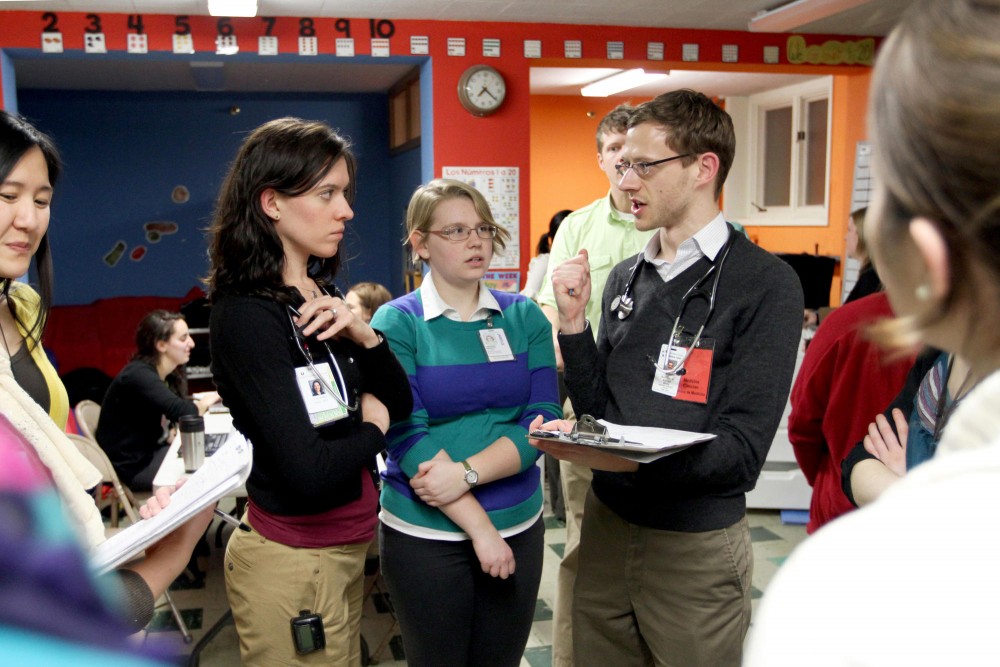Being screened for a knee injury at the Phillips Neighborhood Clinic doesn’t mean a patient is simply treated by an orthopedic doctor. Instead, a team of student volunteers made up of physical therapists, nutritionists and pharmacists meets to discuss the problem.
The volunteers are using an inter-professional approach where they combine their skills to find the best care for the patients — one of a few student-run clinics in the nation using this method.
About 300 University of Minnesota students provide care at the free clinic run solely by student volunteers under the supervision of licensed clinicians. The volunteers include those in the fields of medicine, pharmacy, physical therapy, nursing, nutrition, social work and public health.
After a patient is screened, volunteers from different fields form a “huddle” to decide what care the patient needs.
“Everyone works together instead of doing things separately. It gives everyone a chance to see if their services can be utilized,” Matt Moore, a second-year physical therapy student, said.
In a review published by the Cochrane Collaboration in 2009, four out of six studies found that inter-professional education improved the way professionals from different fields worked together and the quality of patient care. This approach decreased errors and increased customer satisfaction, the review concluded.
The students rarely interact with one another in the classroom, second-year medical student Monica Maalouf said, but the clinic is a good environment to break down stereotypes of other professions and interact on a more personal level.
In January, members of the Phillips Neighborhood Clinic Administrative Board displayed their efforts for inter-professionalism at an annual conference for the Society of Student-Run Free Clinics in Long Beach, Calif. Out of 50 clinics, the Phillips Neighborhood Clinic was one of the few practicing inter-professional care.
“We are one of the only clinics that encourages health professionals from different fields to work together to come up with a comprehensive, holistic approach to patient care,” Maalouf said.
The volunteers feel that by using the approach, they are preparing themselves for their future careers.
“This method is the way healthcare is moving. Some [professional] places are beginning to make care teams, and we’re already doing it at student levels,” said Emilie Hedlund, a second-year master’s of health care administration student.
Patients are seen on a first-come, first-served basis, and the clinic only sees about 12 patients a night — as a result, many patients have to be turned away. The volunteers hope to change this by raising money for expansion and more resources. The clinic is primarily funded by donations, fundraising and community partners.
Hedlund said many volunteers have to also be turned away because of the lack of resources.
The patients are generally uninsured or underinsured and wouldn’t be able to receive extra services.
Nearly 41 percent of children in the Phillips neighborhood live below the poverty line, and 13 percent of adults are unemployed, according to the University’s School of Public Health website.
The volunteers believe that using an inter-professional approach to health care will benefit the patient more than if they were only seen by one student health professional.
Maalouf said, “Creating an inter-professionalism approach to healthcare will give patients more holistic care.”








